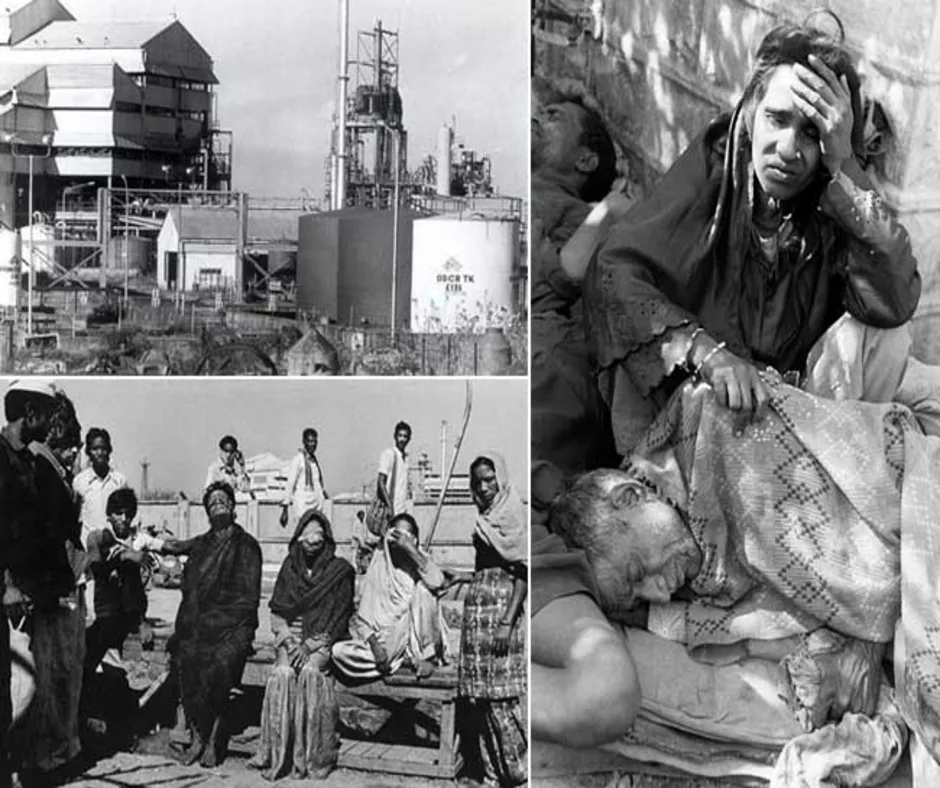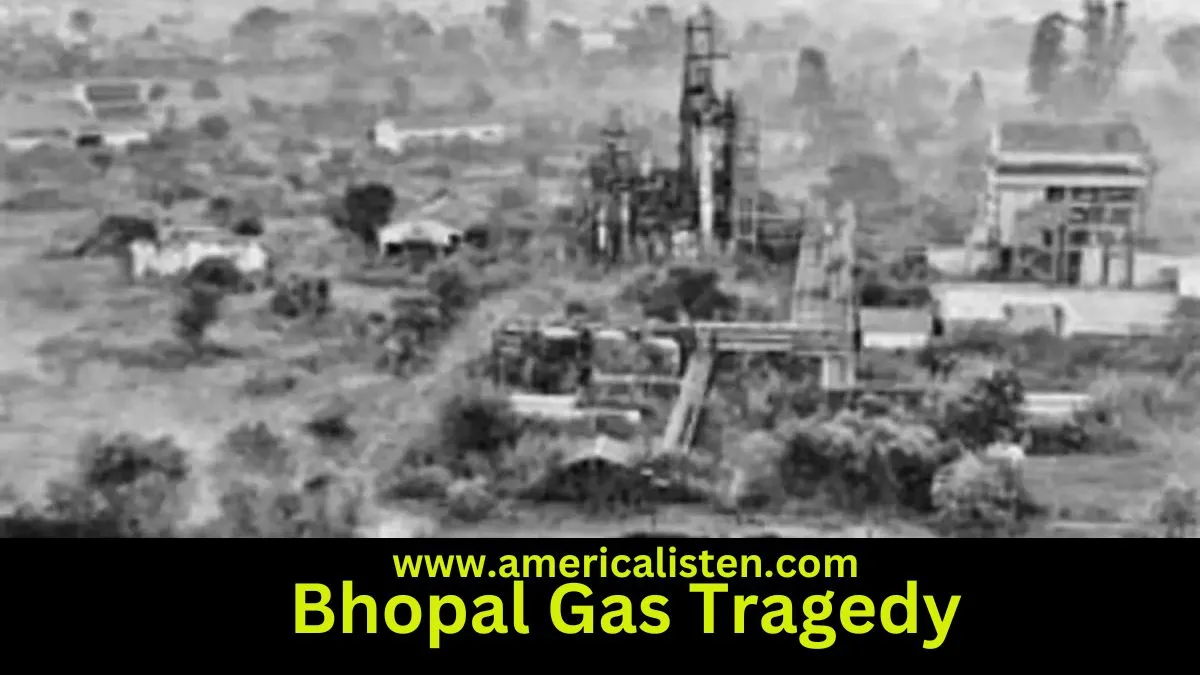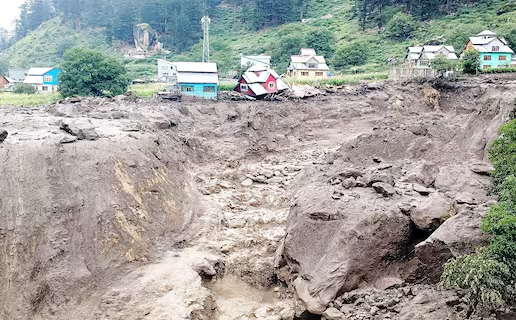“Bhopal Gas Tragedy: Unveiling the Catastrophe That Shook a India”
The Bhopal gas tragedy, one of the most devastating industrial disasters in history, unfolded during the night of 2nd-3rd December 1984 at the Union Carbide India Limited (UCIL) pesticide plant in Bhopal, Madhya Pradesh. This catastrophic event left an indelible mark on the collective consciousness of the nation, claiming thousands of lives and causing long-term health issues for survivors. This article delves into the details of the Bhopal gas tragedy, exploring its causes, immediate aftermath, and the ongoing consequences for the affected.
Causes of the Tragedy:
The Bhopal gas tragedy was triggered by the leakage of methyl isocyanate (MIC) gas from the pesticide plant owned by Union Carbide Corporation, an American multinational. The gas, which is highly toxic, spread throughout the densely populated areas surrounding the factory. The primary reasons behind the disaster were inadequate safety measures, poor maintenance of equipment, and a general lack of preparedness for such a calamity.

Immediate Aftermath:
The impact of the gas leak was immediate and catastrophic. Thousands of people were killed in the initial hours, with estimates of the death toll ranging from 3,800 to over 10,000. The effects of MIC exposure included respiratory failure, eye irritation, nausea, and long-term health complications. The incident resulted in widespread panic, as survivors sought medical attention, overwhelming local hospitals and emergency services.
Union Carbide’s Response and Legal Consequences:
In the aftermath of the tragedy, Union Carbide faced severe criticism for its inadequate safety measures and delayed response. The company eventually agreed to pay compensation to the victims, though the amount was widely criticized as insufficient. In 1989, Union Carbide settled with the Indian government for $470 million, a fraction of the initial demand, in a move that drew further condemnation.
Ongoing Consequences for the Affected Community:
The Bhopal gas tragedy continues to cast a long shadow over the survivors and their families. Many victims suffer from chronic health issues, including respiratory disorders, neurological problems, and birth defects. The contaminated water and soil around the plant site have also raised concerns about the long-term environmental impact on the community.
Legal Battles and Activism:
The quest for justice for the victims of the Bhopal gas tragedy has been a protracted legal battle. Union Carbide and its officials faced charges of negligence and manslaughter. However, legal proceedings were complicated by issues of jurisdiction and challenges in holding a multinational corporation accountable. Activists and advocacy groups continue to demand justice for the victims and a more robust legal framework for corporate accountability.
Legacy and Lessons Learned:
The Bhopal gas tragedy remains a stark reminder of the devastating consequences of industrial negligence and the importance of stringent safety regulations. The incident prompted international discussions on corporate responsibility, environmental safeguards, and the need for stronger legal frameworks to prevent and address industrial disasters.
Conclusion:
The Bhopal gas tragedy stands as a dark chapter in India’s history, symbolizing the human cost of industrial negligence. The disaster’s immediate and long-term impacts continue to affect the lives of survivors and their families. The quest for justice and the ongoing struggle for accountability underscore the need for a comprehensive approach to industrial safety and corporate responsibility to prevent such tragedies in the future.

The Bhopal gas tragedy had a profound and enduring impact on social life, both immediately after the incident and over the long term. Here are some key aspects of its impact on social life:
- Loss of Lives:
- The immediate and most devastating impact was the loss of thousands of lives. The toxic gas leak led to widespread fatalities, causing immense grief and trauma for the affected families and the entire community.
- Health Consequences:
- Survivors of the tragedy faced severe health consequences, including respiratory issues, eye problems, and chronic illnesses. Many suffered from long-term health complications, and children born to survivors experienced a higher incidence of birth defects.
- Displacement and Relocation:
- The gas leak forced many residents to flee their homes in the affected areas, leading to displacement and resettlement. This had a disruptive impact on social structures, with communities being uprooted and dispersed.
- Economic Disruptions:
- The tragedy had significant economic implications for the affected individuals and communities. Many lost their livelihoods as businesses and local economies were disrupted. The economic fallout added to the overall social distress.
- Psychological Trauma:
- The psychological impact of the Bhopal gas tragedy was profound. Survivors and their families dealt with post-traumatic stress, anxiety, and depression. The mental health effects extended to subsequent generations, affecting the overall well-being of the community.
- Stigmatization and Discrimination:
- Survivors of the gas leak often faced stigmatization and discrimination. There were reports of social isolation and rejection as people feared potential health risks associated with those who had been exposed to the gas.
- Community Solidarity and Activism:
- On the positive side, the tragedy spurred a sense of community solidarity and activism. Individuals and groups came together to support one another, demand justice, and advocate for the rights of the victims. This activism played a crucial role in keeping the issue in the public consciousness.
- Legal and Regulatory Reforms:
- The Bhopal gas tragedy prompted increased scrutiny of industrial safety standards and corporate accountability. It led to discussions about the need for stronger regulations and legal frameworks to prevent similar disasters and hold corporations accountable for their actions.
- Environmental Concerns:
- The environmental impact of the gas leak raised awareness about the importance of safeguarding the environment. It led to discussions on industrial practices, waste disposal, and the need for sustainable and environmentally friendly technologies.
- Legacy of Distrust:
- The tragedy left a legacy of distrust among the affected communities towards corporations and government institutions. This skepticism has influenced public attitudes towards industrial development and the perceived prioritization of profits over safety.
In summary, the Bhopal gas tragedy had far-reaching consequences on social life, affecting the physical, mental, and economic well-being of individuals and communities. It also had a lasting impact on how society views industrial practices and the responsibilities of corporations and governments in ensuring the safety and welfare of their citizens.
public sentiment and perceptions can change based on various factors. However, there are several common reasons why people might express anger or dissatisfaction with the government of India. It’s important to note that these reasons may evolve over time, and the situation could be different at the time you’re reading this response. Here are some general reasons why people might be angry with the government:
- Economic Issues:
- High unemployment rates, inflation, economic downturns, or perceived economic mismanagement can lead to dissatisfaction among the public. Issues such as rising prices of essential commodities and unequal distribution of wealth may contribute to anger.
- Corruption Concerns:
- Allegations of corruption or perceived lack of action in dealing with corruption cases can erode public trust in the government. Transparency and accountability are crucial for maintaining public confidence.
- Social and Religious Tensions:
- Communal tensions, religious conflicts, or issues related to caste and identity politics can lead to dissatisfaction. Failure to address these issues or perceived bias in handling them may contribute to public anger.
- Handling of Public Health Crises:
- The government’s response to public health crises, such as the handling of the COVID-19 pandemic, can significantly influence public perception. Issues related to vaccination distribution, healthcare infrastructure, and crisis management can lead to criticism.
- Environmental Concerns:
- Inadequate measures to address environmental issues, climate change, and unsustainable development practices can trigger anger, especially among those who are environmentally conscious.
- Political Dissatisfaction:
- Discontent with political decisions, policies, or governance styles can contribute to anger. This may include concerns about the erosion of democratic institutions, perceived autocratic tendencies, or issues related to political representation.
- Farmers’ Protests:
- Ongoing farmer protests, particularly in response to agricultural reforms, have led to widespread dissatisfaction among certain segments of the population. The handling of these protests and concerns about the welfare of farmers can contribute to anger.
- Human Rights Issues:
- Allegations of human rights abuses, censorship, or restrictions on freedom of expression can lead to public anger. Issues related to social justice, discrimination, and civil liberties may be sources of discontent.
- Foreign Policy Concerns:
- The government’s handling of international relations and foreign policy decisions may also influence public sentiment. Issues related to border tensions, diplomatic relations, or trade policies can be sources of contention.
- Communication Gaps:
- Perceived inadequacies in communication, transparency, and the government’s ability to effectively convey its policies and decisions can contribute to public dissatisfaction.
It’s essential to recognize that public sentiment is diverse, and different segments of the population may have varying reasons for expressing dissatisfaction. Additionally, the political landscape is dynamic, and circumstances can change over time, impacting the public’s perception of the government.
Addressing the needs of affected people requires a comprehensive and empathetic approach. Depending on the nature of the situation, the government of India can consider the following measures:
- Immediate Relief and Rehabilitation:
- Ensure prompt and efficient delivery of immediate relief measures such as food, clean water, shelter, and medical assistance to those affected by natural disasters, public health crises, or other emergencies.
- Implement rehabilitation programs to help people rebuild their lives, including providing financial assistance, housing support, and access to essential services.
- Healthcare Support:
- Strengthen healthcare infrastructure and services to address the health needs of affected individuals, especially during public health emergencies. Ensure the availability of medical supplies, testing facilities, and vaccination programs.
- Establish health camps and mobile medical units to reach remote or heavily affected areas.
- Economic Support:
- Provide financial assistance and economic support to individuals and communities affected by economic downturns, job losses, or other financial crises.
- Implement targeted economic recovery programs, skill development initiatives, and employment generation schemes.
- Psychosocial Support:
- Recognize and address the mental health and psychosocial needs of affected individuals. Establish counseling services, support groups, and mental health awareness programs to help people cope with trauma and stress.
- Education and Skill Development:
- Ensure the continuity of education for children affected by disasters or crises. Establish temporary learning centers, provide educational materials, and support teachers.
- Implement skill development programs for adults to enhance their employability and create opportunities for economic self-sufficiency.
- Infrastructure Development:
- Invest in rebuilding and strengthening infrastructure in disaster-prone or vulnerable areas. This includes constructing resilient buildings, improving transportation networks, and enhancing early warning systems.
- Social Welfare Programs:
- Expand and improve social welfare programs to provide support to vulnerable populations, including the elderly, disabled, and marginalized communities.
- Implement targeted interventions to address issues such as malnutrition, sanitation, and access to clean water.
- Legal and Financial Assistance:
- Simplify and expedite the process for affected individuals to access legal and financial assistance. This includes insurance claims, compensation for loss of property, and support for livelihood restoration.
- Community Engagement:
- Foster community engagement and participation in the decision-making process. Involve local communities in the planning and implementation of relief and rehabilitation measures to ensure they meet the specific needs of the affected populations.
- Transparent Communication:
- Maintain transparent and open communication with the public. Provide accurate and timely information about relief efforts, available support services, and government initiatives to build trust and manage expectations.
- Long-Term Planning and Prevention:
- Implement long-term planning and preventive measures to reduce the impact of future disasters or crises. This may involve investment in infrastructure resilience, early warning systems, and community-based disaster preparedness programs.
- Collaboration with NGOs and International Organizations:
- Collaborate with non-governmental organizations (NGOs), international organizations, and community-based groups to enhance the reach and effectiveness of relief and rehabilitation efforts.
It’s crucial for the government to approach these measures with sensitivity, inclusivity, and a commitment to addressing the unique needs of different communities and individuals. Regular assessments, feedback mechanisms, and continuous monitoring can help ensure that the assistance provided is relevant and impactful.
Preventing accidents requires a multi-faceted approach involving proactive measures, regulatory frameworks, and community involvement. Here are several strategies that can contribute to accident prevention:
- Stringent Safety Regulations:
- Enforce and regularly update safety regulations across industries. This includes guidelines for manufacturing, construction, transportation, and other sectors. Ensure that businesses adhere to these regulations through inspections and penalties for non-compliance.
- Investment in Technology and Automation:
- Embrace technological advancements to enhance safety measures. Automation, sensors, and monitoring systems can help detect and address potential hazards in real-time, reducing the likelihood of accidents.
- Training and Education:
- Provide comprehensive training for workers, emphasizing safety protocols, emergency response procedures, and the proper use of equipment. Ongoing education can empower individuals to identify and mitigate risks in their respective environments.
- Workplace Safety Culture:
- Foster a culture of safety within organizations. This involves creating an environment where employees feel comfortable reporting safety concerns, and where management actively addresses and resolves these issues promptly.
- Community Awareness Programs:
- Conduct public awareness campaigns to educate communities about potential hazards, emergency preparedness, and safety measures. This is particularly important in areas prone to natural disasters or industrial accidents.
- Emergency Response Planning:
- Develop and regularly practice emergency response plans for various scenarios. This includes conducting drills, ensuring access to emergency exits, and having well-defined procedures for evacuations and first aid.
- Environmental Impact Assessments:
- Require thorough environmental impact assessments for industrial projects before they commence. These assessments should evaluate potential risks and propose measures to mitigate adverse effects on the environment and surrounding communities.
- Regular Inspections and Audits:
- Implement regular inspections and safety audits conducted by regulatory bodies. Independent audits can identify areas of improvement, ensuring that businesses adhere to safety standards and guidelines.
- Investigation and Reporting Systems:
- Establish effective investigation and reporting systems for accidents. Learning from the root causes of accidents can help prevent similar incidents in the future. Encourage a transparent reporting culture where individuals feel safe reporting safety concerns without fear of reprisal.
- Technological Innovations for Safety:
- Invest in research and development of new technologies specifically designed to enhance safety. This may include innovations such as wearable safety devices, remote monitoring systems, and advanced safety equipment.
- Regulatory Oversight and Enforcement:
- Strengthen regulatory bodies and ensure effective enforcement of safety regulations. This involves having qualified personnel, clear guidelines, and a commitment to holding businesses accountable for safety lapses.
- Community Involvement:
- Involve local communities in decision-making processes related to industrial projects, especially those with potential risks. Community input can provide valuable perspectives on potential hazards and solutions that may be overlooked by industry professionals.
- Global Collaboration:
- Collaborate internationally to share best practices, research findings, and technological advancements in safety. Learning from global experiences can contribute to more effective accident prevention measures.
- Incentives for Safety Performance:
- Provide incentives for businesses that demonstrate a commitment to safety. Recognition and rewards for exemplary safety records can encourage a proactive approach to accident prevention.
By integrating these strategies, governments, industries, and communities can work together to create safer environments and reduce the occurrence of accidents. It’s crucial to recognize that accident prevention is an ongoing process that requires vigilance, adaptability, and a commitment to continuous improvement.
For More Details please Visit HERE.
If You are interested to Read More Articles on topic ”Israel Hamas ongoing War ” then please visit Here .






